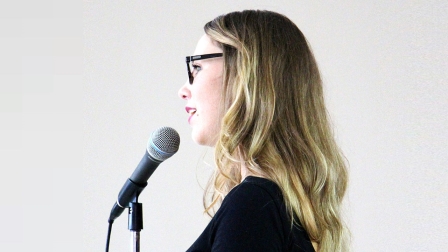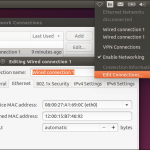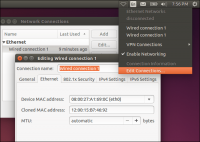5 Tips To Turn Your Conference Talk Into A Networking Opportunity
You landed a speaking role at an upcoming conference. Great! Now what? Well, if you’re lucky, a decent crowd will show up for your talk, nod politely while you speak, and amble out afterward. That doesn’t mean it was a failure—after all, this is how most presentations at formal events like conferences tend to go. They help you share a few ideas, raise your professional profile, and maybe lead to an exchanged business card or two.
But there are a few ways to turn your speaking engagements into much more powerful networking opportunities than just this. Here are five.
1. Provide A Handout
You may worry that conference-goers already have heaps of materials to cart around with them—and they probably do. But even if they toss it away afterward, a simple hard copy of your talk’s key ideas can help them follow along better while you’re delivering it and remember its details better afterward.
You don’t have to go overboard. Just distill your main takeaways into a visually compelling one-page handout. Include a headshot, a quick biography, and contact information at the bottom or on the reverse. Many speakers print out copies of all their slides, but this can be costly (to your wallet and the environment), and it isn’t all that effective. In most cases, listeners are more likely to review and hang onto a one-page distillation of your message, especially if it’s got action items that relate directly to them. It may even be worth hiring a designer to help you polish up the look of your one-pager as well as your slides.
When it comes time for your talk, make sure you have handouts at place settings or on chairs before attendees arrive. This will prevent the distraction of waiting for handouts to make their way through the room as you start speaking.
2. Record Your Presentation So You Can Share It Later
When you work hard on a big presentation, you should share it beyond the live audience (assuming you have the okay of event organizers). Some conferences will record your program for you. If not, consider hiring a professional videographer who can record high-quality footage of your speech. Look for one who uses more than one HD camera and captures sound with an independent microphone system—not just the one the conference uses to amplify sound in the auditorium. This way you can leave with a high-quality recording, even if one camera or device fails.
Then make sure you share it. Conference organizers may be willing to include it on their website, but you should post it on your own site, your LinkedIn profile, YouTube channel, the other social media accounts that you use professionally, too. Think of this as a powerful piece of content for making connections and starting new conversations. In this sense, the video of your talk is out there in the world, networking for you virtually.
3. Wear Something That Stands Out
No, you shouldn’t wear something totally outlandish, but it helps to dress in a way that makes you easy to recognize after your talk wraps up. After all, you want people to come find you and strike up a conversation. So you might wear a brightly colored blouse or tie, or perhaps a blazer with an interesting print (just make sure ahead of time that the pattern won’t jump on camera).
Then make sure you continue to wear the same clothes the rest of the day of your talk so attendees can identify you even hours later. If conference events in the late afternoon or evening call for less formal clothing, consider wearing a casual shirt in the same bright color, or pair your unique blazer with jeans and an open-collared shirt.
4. Collect Business Cards
This tried-and-true step isn’t one you can ignore. When people have a meaningful interaction with you at the event, ask for their business card and offer yours in return. But this basic networking rule is worth reiterating with a caveat: Don’t be the annoying speaker who shoves business cards at every passerby. That’s the quickest way to squander the platform you’ve been given.
Instead, try to jot down a note about each of your conversations on the back of the cards you’re handed; this way you’ll be able to follow up with those you’d like to connect with. A brief, personalized note via LinkedIn or email can go a long way. If an audience member approached you with a specific question after your talk, your message should contain a few links articles, videos, books, or other resources that the person might find useful.
5. Stay For The Entire Conference
To make the most of your conference presentation, attend sessions before and/or after your own speech. If you speak early in the program, you can relax after your talk, network with fellow attendees, and learn from other speakers—both about the content of their talk and about different presentation styles you might want to try out yourself next time.
If you speak late in the conference, participating in earlier sessions helps you learn more about your audience and creates a chance to mention of other sessions and attendees during your talk. Plus, any new friends you make before it’s your turn to speak can even serve as encouraging audience members.
Giving a great presentation at a conference takes a significant investment of time, if not money. But if you do it right, it can pay dividends long afterward, broadening your network and contributing to your business. Conferences are often packed with content in a way that sometimes makes it tough to stand out. But follow these five steps and you’re likely to leave an impression on some of the key people who attended—and, hopefully, plenty of others who didn’t.
Christine Clapp is the author of Presenting at Work: A Guide to Public Speaking in Professional Contexts and the president of Spoken with Authority. Follow her on Twitter at @christineclapp.
Fast Company , Read Full Story
(20)













